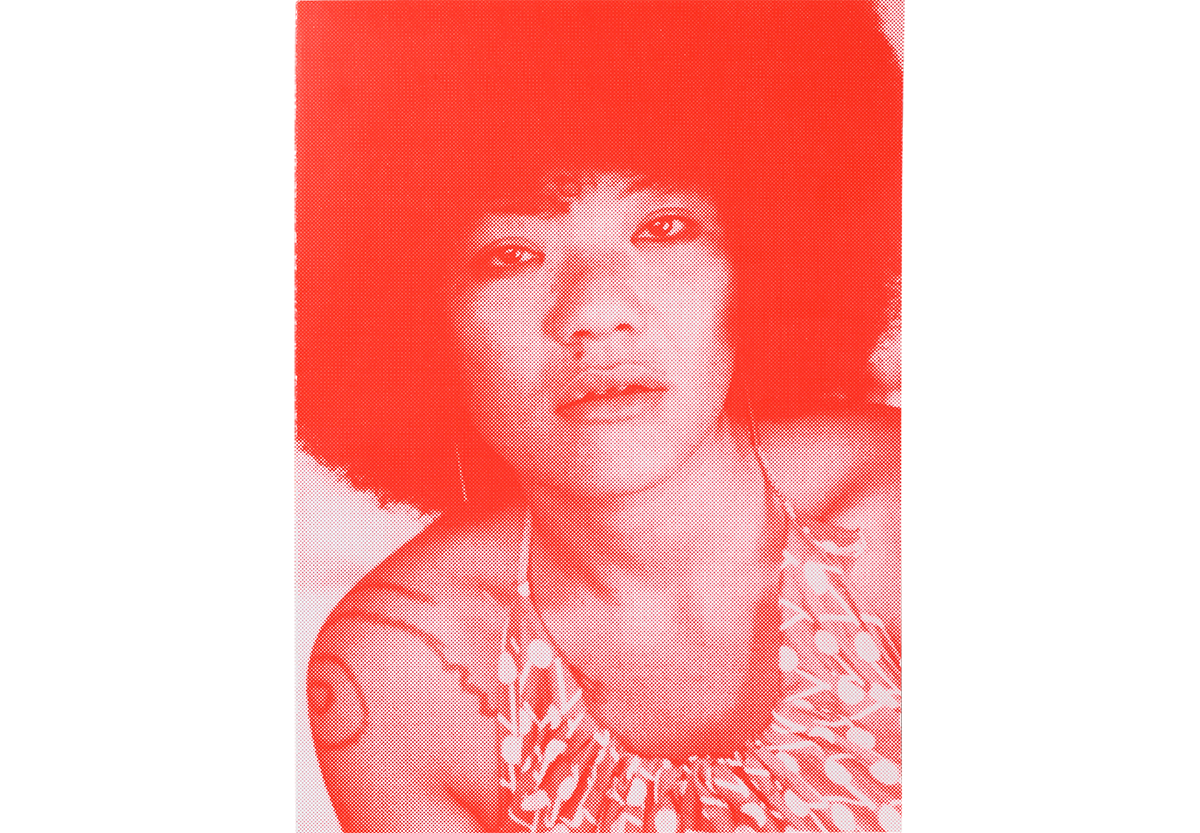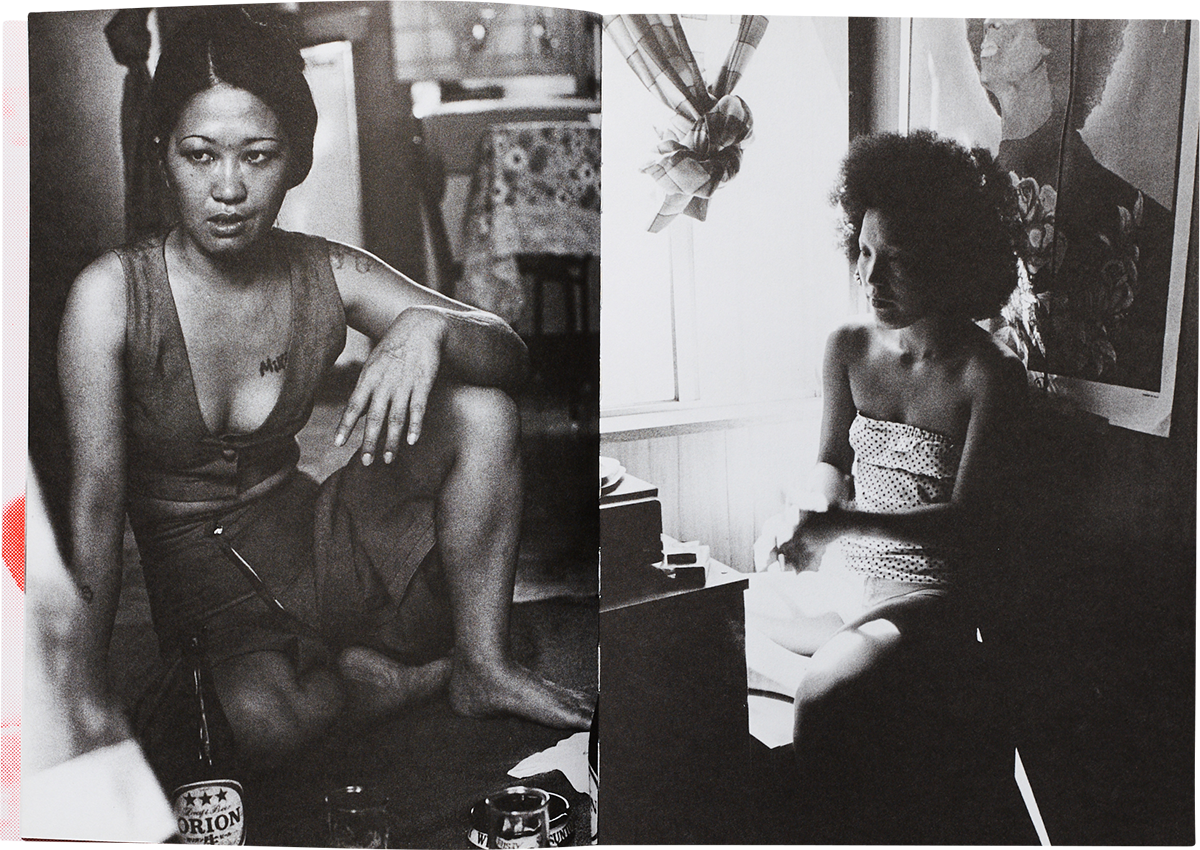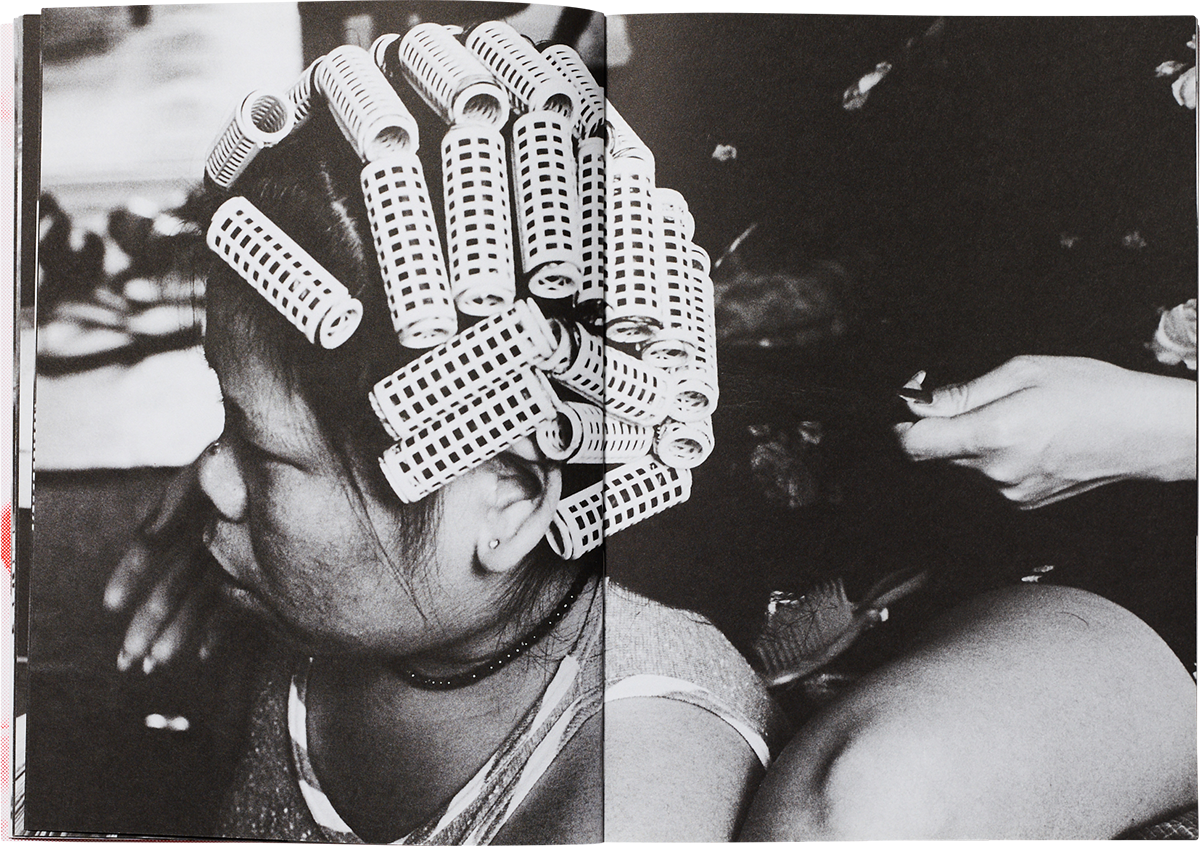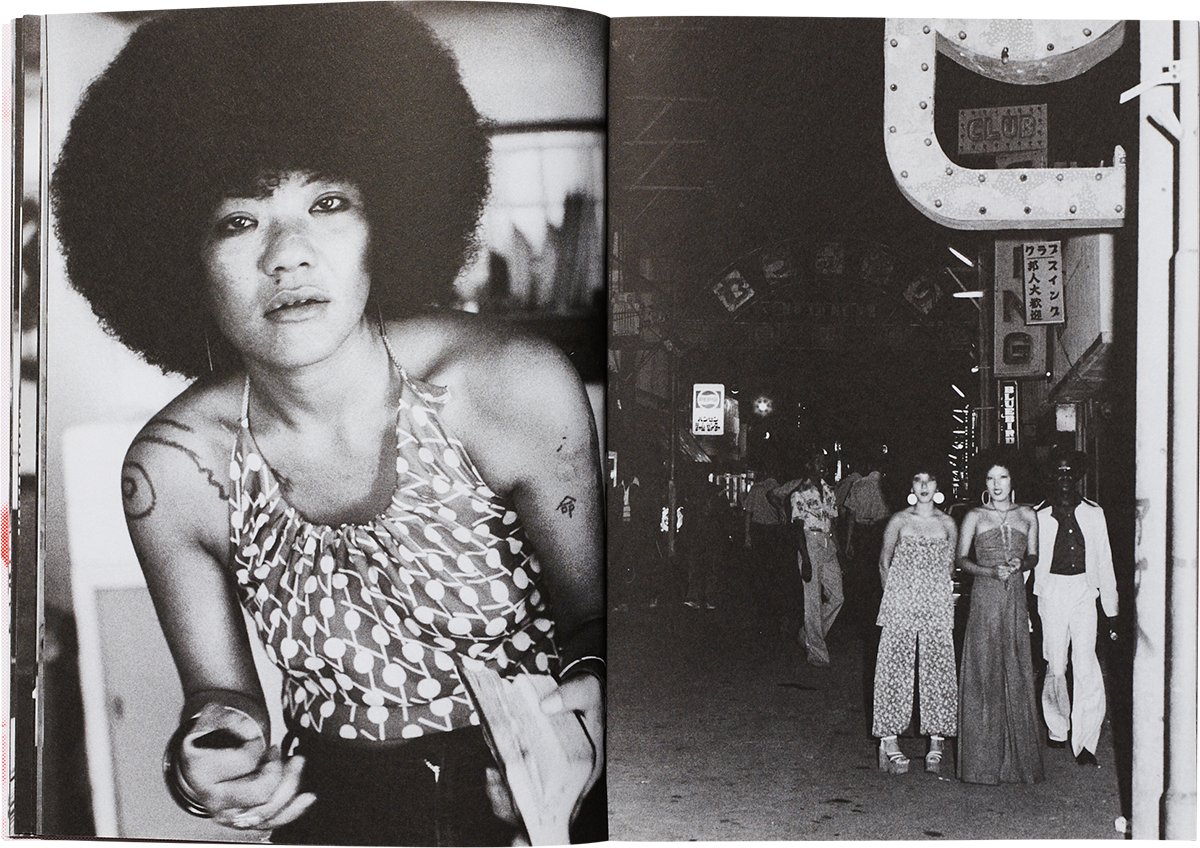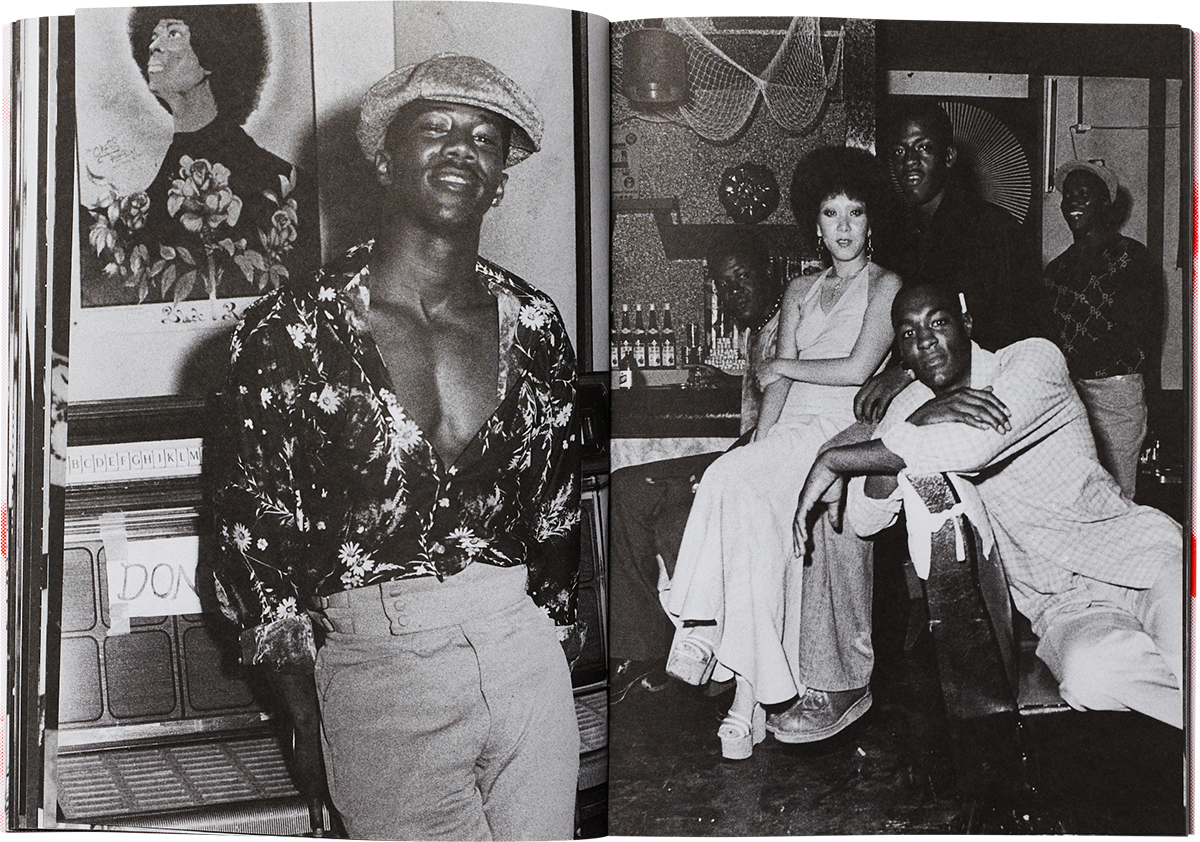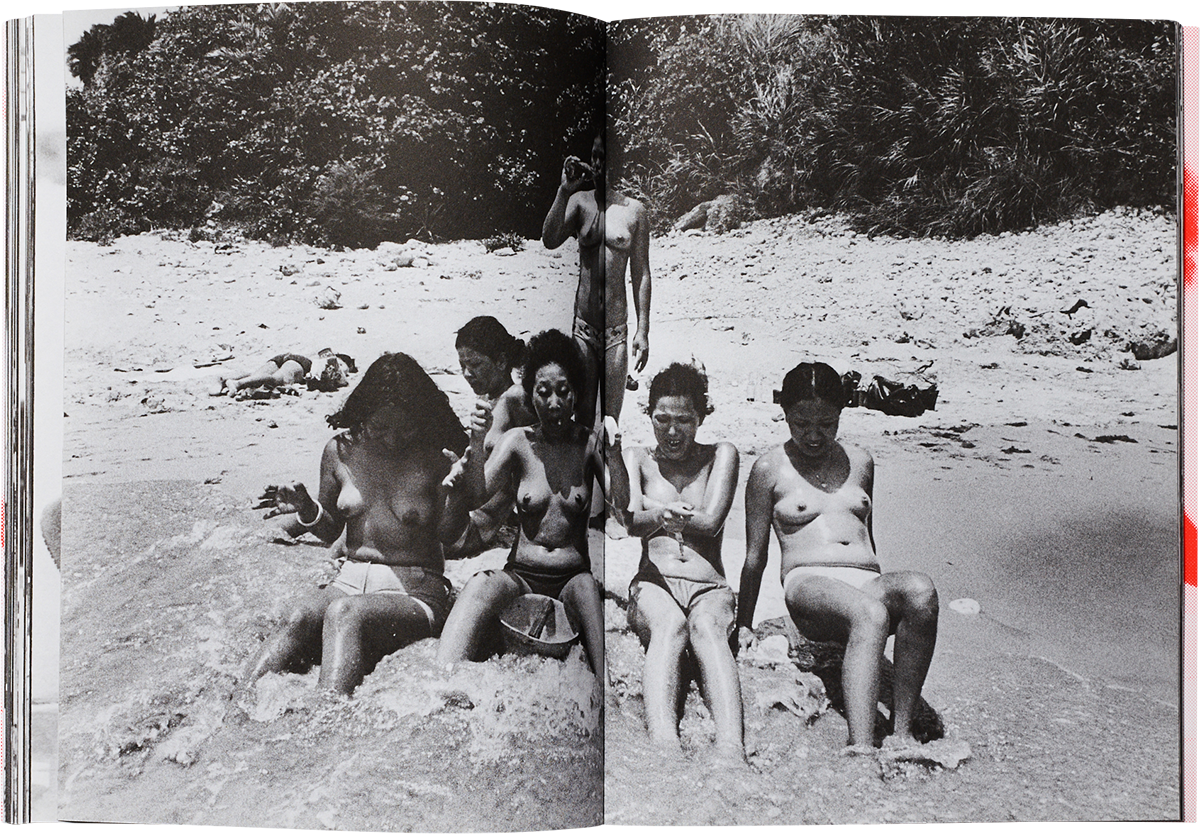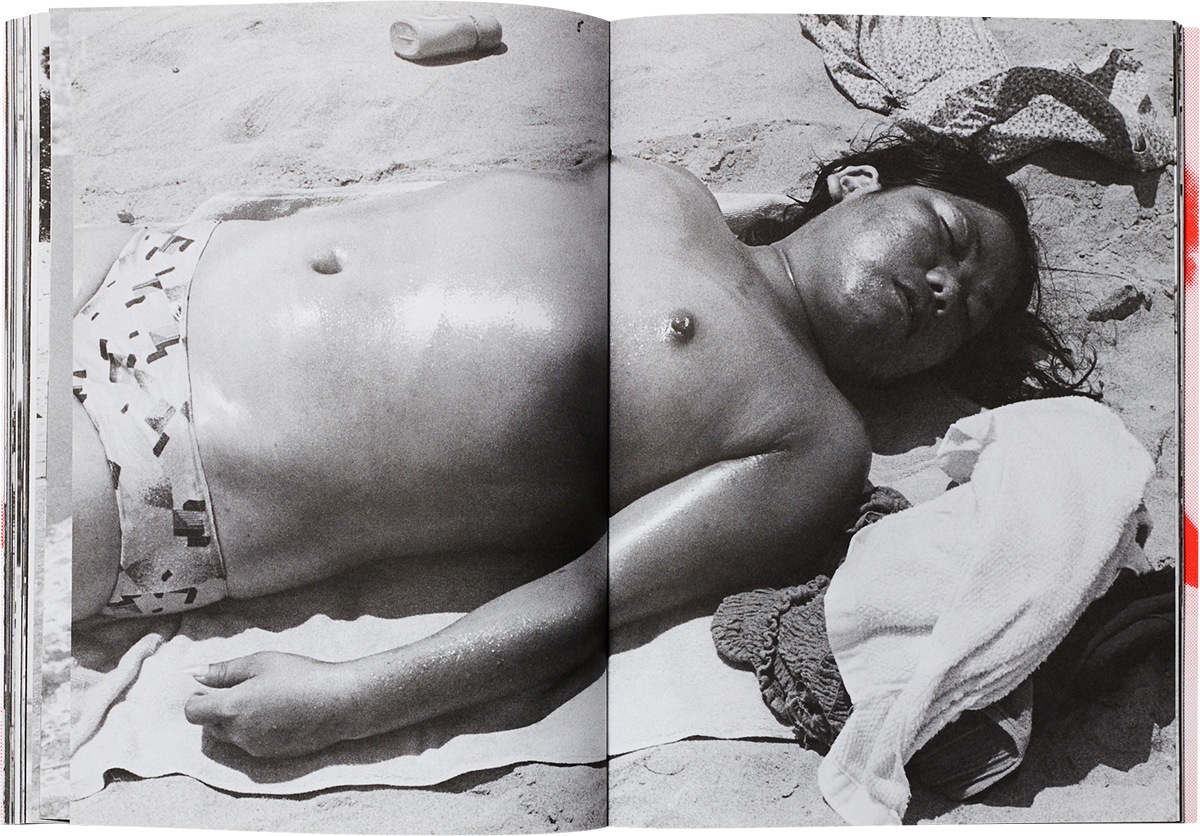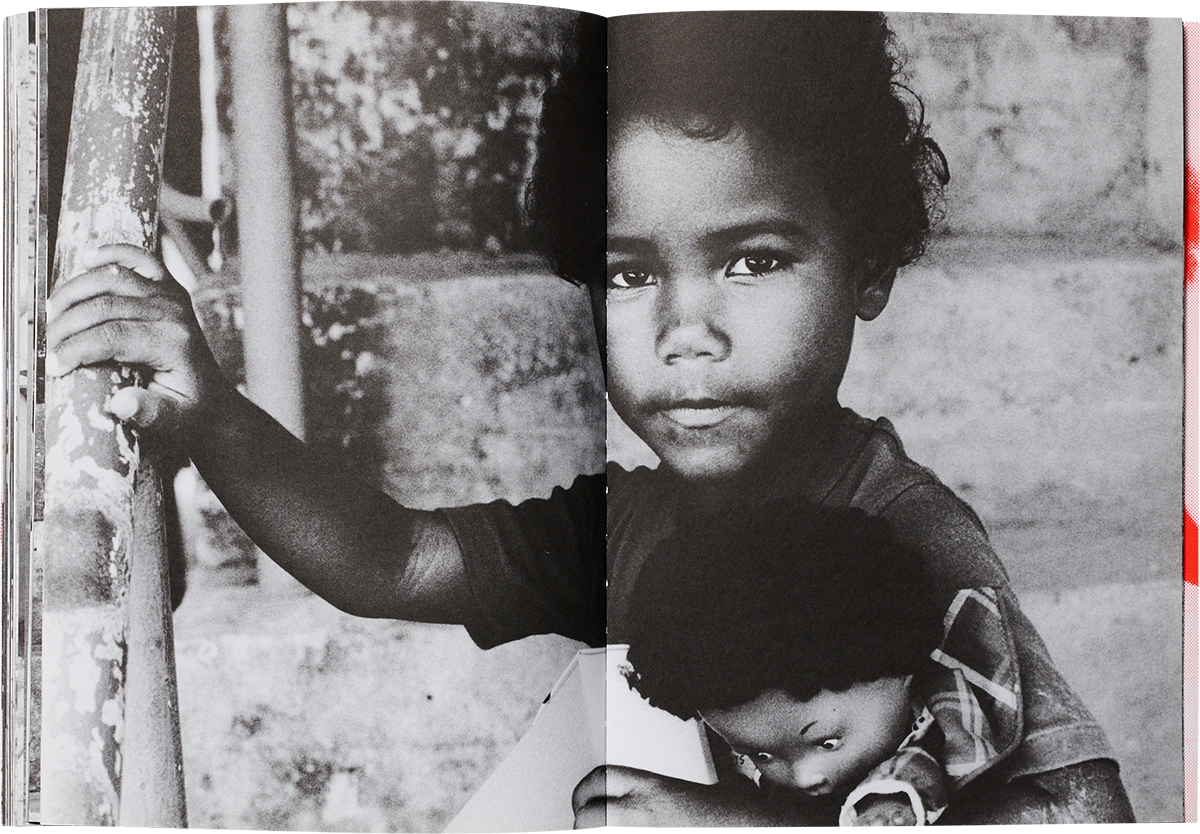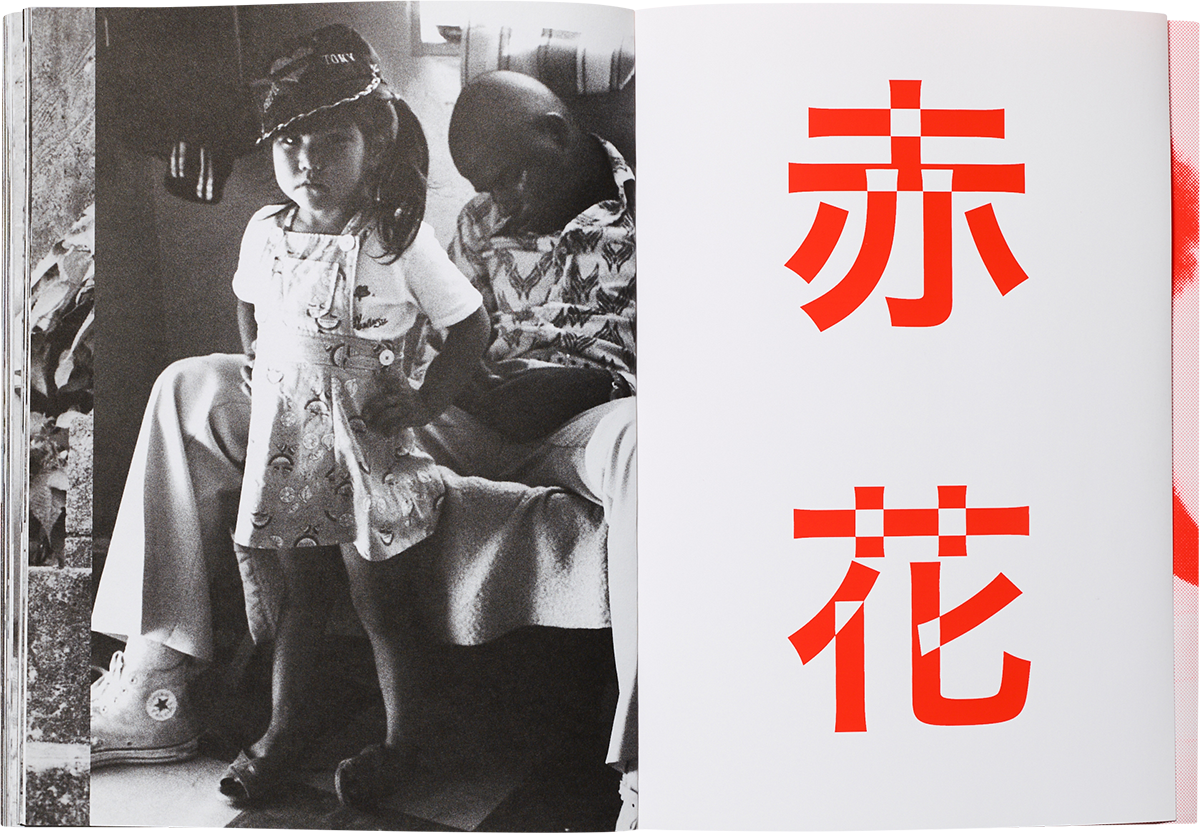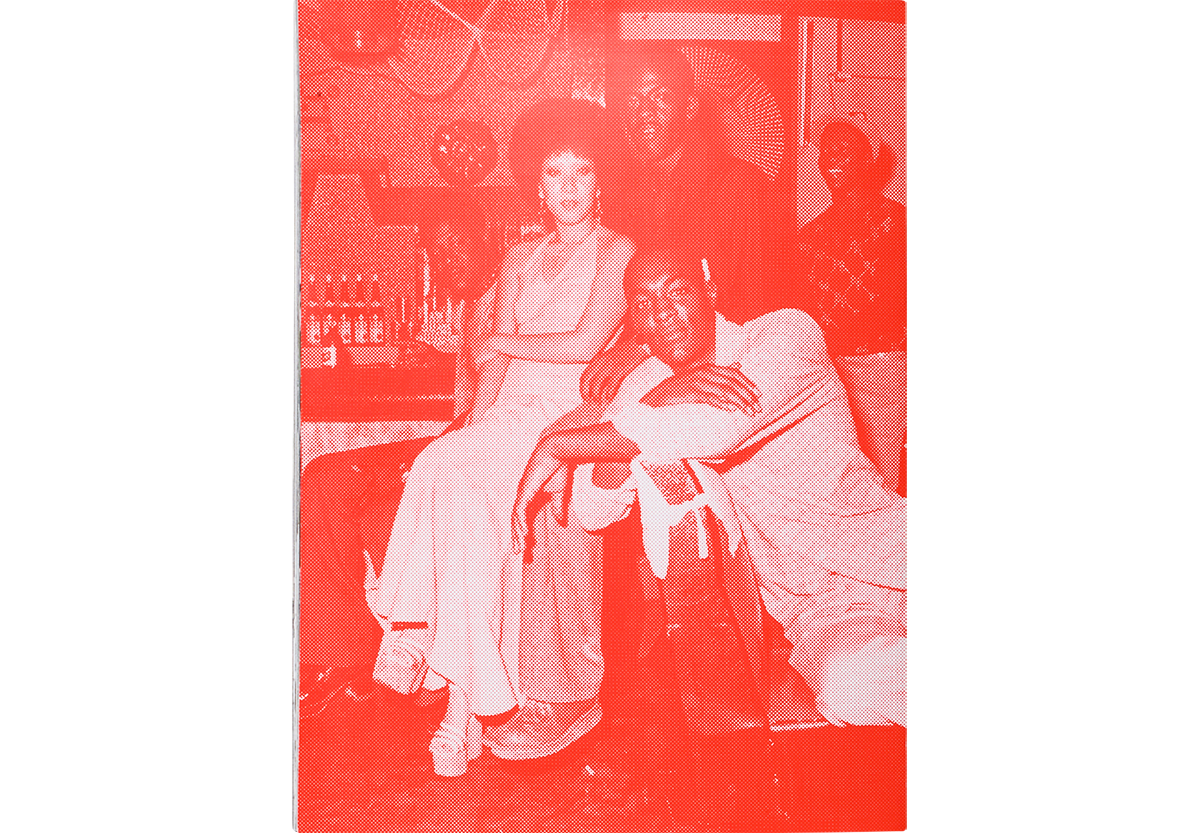—Photography: Mao Ishikawa
—Text: Mao Ishikawa
—English Translation: Jun Sato
—Design: Studio Lin, NYC
—Printing: Die Keure, Brugge, BE
—Color Proofing: Colour & Books, Apeldoorn, NL
—9" x 13"
—Soft cover
—112 pages
—Edition of 600
—2022
—2nd Printing
—$70
Session Press’ Red Flower, The Women of Okinawa, published in 2017, was the first US monograph by Okinawan photographer Mao Ishikawa, a highly revered figure in Japan. The release of the second printing in September of this year marks the fiftieth anniversary of Okinawa’s reversion to Japan in 1972 since its’ occupation by the US after World War II. Red Flower celebrates the courageous and honest lives of women she met and befriended while working at bars in Koza and Kin that were hang-outs for black soldiers from the local US military bases in Okinawa. The book features several unpublished photographs from artist's first book, ”Hot Days in Camp Hansen" published in 1982. Red Flower is the seminal work of Ishikawa, marking the starting point of her subsequently long career as a photographer. Designed with full-bleed images reproduced in a large format with intense b/w printing which successfully conveys the original lively spirit and tension of Ishikawa’s Camp Hansen work, available once again for wider public appreciation with an essay by the artist
Session Press presents “Red Flower, The Women of Okinawa,” the first United States monograph by Okinawan photographer Mao Ishikawa. “Red Flower” consists of 80 black and white photographs that date from 1975 to 1977 taken in Koza and Kin, Okinawa, primarily from Ishikawa’s first book “Hot Days in Camp Hansen” by A-man Shuppan in 1982, but also includes unpublished work from the same period. “Red Flower” exhibits Ishikawa’s celebration of the courageous and honest lives of women she met and befriended while working at military bars at a time when social and political tensions between the US and Japan were on high alert. It consists of five chapters of pictures, followed by her essay dedicated to the publication: girls gossiping about boys, working at the bar, meeting their boyfriends at home, enjoying themselves at the beach, and their children for the future of Okinawa. “Red Flower” is the pivotal work for Ishikawa, since it marks the starting point of her subsequent long career as a photographer.
Her attendance of Shomei Tomatsu’s class at WORKSHOP photography school in the Spring of 1974 seems to have had a strong influence on her style; their close association as friends and teacher/student continued until his death in 2012. Martin Parr identifies her work as ‘post-Provoke’ in The Photobook: A History Volume III (page 90), observing the strength of her photography is charged by its directness and rawness, in contrast to the stylized symbolism preferred by the previous generation of Provoke photographers. Most importantly, it is crucial to note that her work is often delivered from the result of her pure pursuit of her subject matter. Especially for this particular project, Ishikawa’s engagement to the subject was enormous; she worked as a server at the bars along with the other girls and had relationships with boys she met there for two years. Thus, her personal involvement enables her to capture the actual events and scene without theorizing or romanticizing. In “Red Flower”, Ishikawa reveals her very honest personal documentary in all sincerity, while still maintaining enough detachment from the subject to be able to perfectly capture the scenes with her sharp eyes.
Okinawa has been one of the most popular subjects in the history of Japanese photography, having attracted many renowned Japanese photography masters such as Tomatsu Shomei, Daido Moriyama, Nobuyoshi Araki, and Keizo Kitajima. Born and raised in Okinawa, Ishikawa is still the only female photographer still vigorously making work in Okinawa (and living in Okinawa) in spite of whatever taboos or challenges she came across along the way.
Previously Ishikawa made two publications on the same subject. Her first book, “Camp Hansen” is not, in fact, her monograph since another photographer, Toyomitsu Higa took the photos in the second half of the book. Also, it was regretfully banned due to claims from two girls in the book shortly after it was released, so it is extremely rare and expensive. The other volume of Ishikawa’s Okinawa work was published on the occasion of her exhibition at Yokohama Civic Art Gallery Azamino in 2013. Since it mainly functions as reference to her general work, and it was laid out with large white framing surrounding smaller format photos, it loses the boldness, honesty and urgency which are characteristic of her work. “Red Flower” features full-bleed images in a large format with intense black and white printing, and successfully makes the original lively spirit and tension of Ishikawa’s legendary “Camp Hansen” work available again for wider public appreciation.
Dashwood Books will host Ishikawa’s signing event on Tuesday, March 28 from 6 to 8 pm.
沖縄県が本土に復帰したのは1972年5月15日。本年、2022年は、アメリカから施政権が返還されて50年の節目にあたり、沖縄を代表する写真家、石川真生の『赤花』の第2版を刊行します。
ニューヨークの出版社セッション・プレスは、この度、沖縄出身の写真家石川真生の写真集『赤花 アカバナー、沖縄の女』 を発刊し、 沖縄県のコザ、金武で1975年から77年の間に撮影した、 処女作『熱き日々 in キャンプハンセン』(1982年、あーまん出版)からの作品を中心に、未発表の作品を含めたモノクロ写真80点を紹介します。沖縄の基地の街のバーで働く女性たちの姿を赤裸々に撮った本作は、今よりも日本と沖縄、米国の政治的背景が複雑であった時代に、自分の心の赴くままに純粋に青春を謳歌し、自由を愛する女性へ、石川が熱き想いを込めて制作しました。本作の編集は、石川が書き下ろしたエッセイに合わせ5つの章で構成されています。ボーイフレンドについて噂をしあう女たち、バーに働きにでる姿、家でボーイフレンドと寛ぐ様子、海岸での楽しい午後、そして、未来の沖縄を支える子供たちのポートレイトです。70年代中期から後期に撮影された『赤花 アカバナー、沖縄の女』 は、石川の写真家への道を導くこととなった初期作品として重要な写真集です。
1974年の春の短い間でしたが、 東京の写真学校で東松照明から、写真の基礎について受講したことは、のちの石川の作品のスタイルを築くきっかけとなりました。石川の作品は、 マーティン・パーやその他の海外の批評家が評価するように、一世代前の象徴的で観念的な表現のプロボーク写真とは異なり、対象をまっすぐに捉えたポートレイトであり、力強く生々しい感性に満ち溢れています。また、最も重要な点は、石川の写真は自身が心から興味を持ったことに対し、実際に肌で感じたことのみを表現した点にあります。特に本作では、バーに集まるアメリカ兵の姿を撮影したいと望んだ石川が、しだいにバーで働く女たちに興味をもち、ともに働き、また友人として親交を深めながら2年間の歳月をかけて撮影することで完成しました。論理的に物事を解釈し、また陳腐な感傷に陥ることなく、写真家石川真生の冷静な視線を通し、女たちの姿は、美しく、力強く、生き生きと表現されています。
これまで、沖縄というテーマは日本の著名な写真家、(東松照明、森山大道、荒木経惟、北島敬三)の間でも関心の高い主題として人気を集めてきました。 沖縄に生まれ育った沖縄出身の女性の作家として、石川は生涯をかけて沖縄を精力的に撮り続ける作家として唯一無二の存在と言えるでしょう。
Artist Statement
Okinawa, located between mainland Japan and Taiwan, consists of the southernmost islands in Japan. Around the end of the Battle of Okinawa in 1945, the US military began building bases all over Okinawa, one after another. In 1975, I was 22 years old and wanted to take photographs of US soldiers, so I started working at bars catering to black soldiers in Koza city (now Okinawa city) and Kin town. At the time, bars catering to black soldiers and white soldiers were segregated. The two prevailing theories were that they had been segregated by the US military due to endless fights, and that they had segregated themselves naturally.
At the time I was young and rash, and before I gave it any thought I was already doing it. I couldn’t speak English at all but I went and talked to a proprietor of one of the bars and started working there that night. The customers were almost all US soldiers in their 20s. Being around their age I was very popular. I had boyfriend after boyfriend. Sometimes one would rent an apartment and we would live together. At the time even the lowest ranking US soldiers made more than Okinawans and so it was normal to live with a girl you liked at a bar.
Koza started to become more and more run-down. Some of my bar girl friends had moved to Kin and told me that “Kin is the happening place now” and eventually I moved there too. I had originally entered the town to take photographs of US soldiers but gradually I found that taking photographs of my fellow bar girls was more interesting. They expressed their emotions very straightforwardly. When the man they were living with ended his deployment and moved back to America, they would weep. But after awhile they would have already found another boyfriend. How resilient, I would always think in admiration.
I would hear rumors about girls getting in a fight over a guy. Girls would start drinking in the daytime and get wasted. In the middle of some conversations, their faces glimpsed in profile were terribly serious.
One afternoon we all went to the beach. Right behind was a big street with many cars. Without anyone saying, anything we all stripped to our panties. There was an American ship stationed a bit out and one soldier was on guard duty. The other soldiers already went on shore, they probably left to have fun somewhere. The girls all shouted “hey!” at that one soldier and had fun teasing him. They laughed like children and played in the sand innocently.
“What’s wrong with loving a black man! What’s wrong with working at a black bar! What’s wrong with celebrating our freedom! What’s wrong with enjoying sex!” I liked these bar girls who lived open and free in narrow, cramped Okinawa. I had never cared much about what others thought of me but their ethos of “let’s live free, do what we want, and trust ourselves” made me care even less.
There are those who look down on women who work at military bars. They assume that the women are prostitutes. That is a total misconception. The worst position is looking down on others. I want to take down those high horses. The bar girls were living their lives to the fullest. No one has the right to talk down on those lives. I love the women who loved black men. To me, these are the most important photographs that I took in my 20s, in the 1970s.
Mao Ishikawa
(Translation: Jun Sato)
Mao Ishikawa
(Okinawa, 1953)
Mao Ishikawa was born in Okinawa in 1953 and currently working in Tomigusu City, Okinawa and Ishikawa has been taking pictures of people in Okinawa for over 40 years. Ishiakwa attended WORKSHOP, a class by Shomei Tomatsu in 1974. Mao Ishikawa’s Okinawa collection included at The Metropolitan Museum of Art, New York. Ishikawa has exhibited her work at many other cultural and art institutions worldwide including “Dai-Ryukyu Shahin Emaki” at Naha Civic Gallery in Okinawa (2014), Photographer Mao Ishikawa, snapping Okinawa at Yokohama Civic Art Gallery in Azamino, Kanagawa (2013) and Okinawa Soul at East Gallery in London (2010) and so on. Ishikawa has published “Morika” (miraisya, 2014), “Here’s What the Japanese Flag Means to Me” (miraisya, 2011), “Okinawa Soul” (Ota Publication, 2002), “Sachiko Nakada’s Traveling Company” (self-published, 1991) and many others.
石川真生
(1953年・沖縄県生れ)
1953年4月26日沖縄県生れの沖縄、日本を代表する国際的に活躍する写真家である。現在は、沖縄県豊見城(トミグスク)市在住し、沖縄に生きる人々を撮り続けてきた写真家として、写真家人生40年を過ぎた現在も、16世紀から現在に至る沖縄の歴史を創作写真で表現する作品『大琉球写真絵巻』に取り組んでいる。
